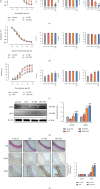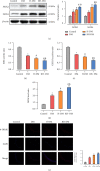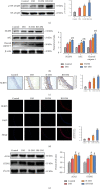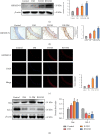Recurrent Hypoglycemia Impaired Vascular Function in Advanced T2DM Rats by Inducing Pyroptosis
- PMID: 35915611
- PMCID: PMC9338872
- DOI: 10.1155/2022/7812407
Recurrent Hypoglycemia Impaired Vascular Function in Advanced T2DM Rats by Inducing Pyroptosis
Abstract
Background: Hypoglycemia is a dangerous side effect of intensive glucose control in diabetes. Even though it leads to adverse cardiovascular events, the effects of hypoglycemia on vascular biology in diabetes have not been adequately studied.
Methods: Aged Sprague-Dawley rats were fed a high-fat diet and given streptozotocin to induce type 2 diabetes mellitus (T2DM). Acute and recurrent hypoglycemia were then induced by glucose via insulin administration. Vascular function, oxidative stress, and pyroptosis levels in aortic tissue were assessed by physiological and biochemical methods.
Results: Hypoglycemia was associated with a marked decrease in vascular function, elevated oxidative stress, and elevated pyroptosis levels in the thoracic aorta. The changes in oxidative stress and pyroptosis were greater in rats with recurrent hypoglycemia than in those with acute hypoglycemia.
Conclusions: Hypoglycemia impaired vascular function in aged rats with T2DM by inducing pyroptosis. The extent of injury increased with the duration of blood glucose fluctuation.
Copyright © 2022 Minghao Luo et al.
Conflict of interest statement
The authors declare that there are no conflicts of interest.
Figures





References
-
- Sinclair A., Saeedi P., Kaundal A., Karuranga S., Malanda B., Williams R. Diabetes and global ageing among 65-99-year-old adults: Findings from the International Diabetes Federation Diabetes Atlas, 9th edition. Diabetes Research and Clinical Practice . 2020;162:p. 108078. doi: 10.1016/j.diabres.2020.108078. - DOI - PubMed
-
- Bloomgarden Z., Ning G. Diabetes and aging. Journal of Diabetes . 2013;5(4):369–371. - PubMed
MeSH terms
Substances
LinkOut - more resources
Full Text Sources
Medical

